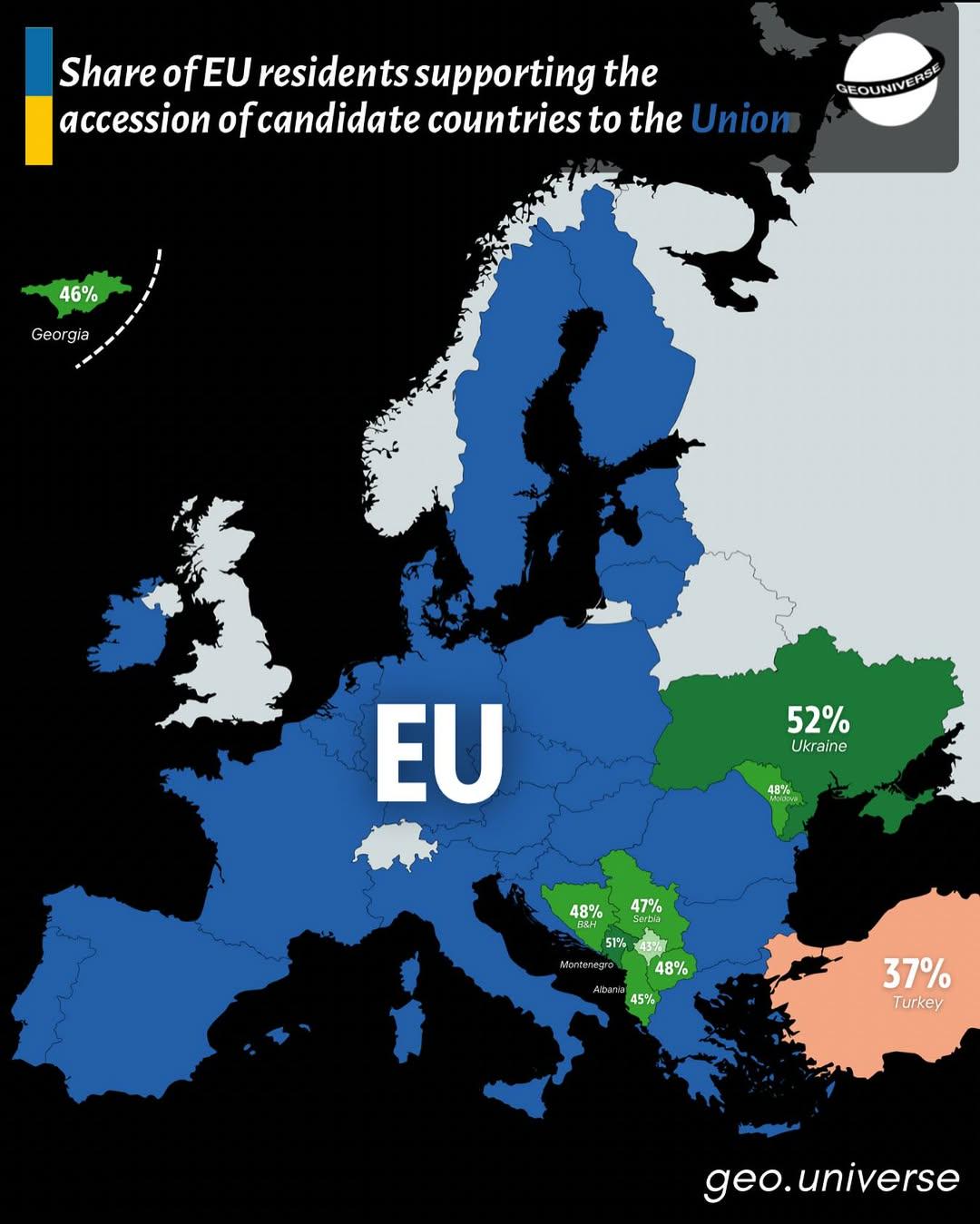EU Membership Candidates Map


Marcus Rodriguez
Historical Geography Expert
Marcus Rodriguez specializes in historical cartography and geographic data analysis. With a background in both history and geography, he brings unique...
Geographic Analysis
What This Map Shows
This map visually represents the potential candidates for European Union (EU) membership, showcasing countries that are currently in the accession process or have expressed interest in joining the EU. It provides a clear geographic perspective on which nations are on the trajectory towards membership and highlights the political and economic landscapes of these countries. Understanding who might join the EU next is not just about borders; it’s also about the intricate relationships between these nations and the existing EU member states.
Deep Dive into EU Membership Aspirants
Ever wondered why certain countries are keen on joining the EU? The European Union is not merely a political and economic alliance; it represents stability, economic opportunity, and a commitment to shared values like democracy and human rights. Countries seeking membership often do so to enhance their political clout, boost trade, and attract foreign investment. The accession process, however, isn't straightforward. It involves rigorous evaluations and compliance with EU standards on governance, human rights, and economic policies.
As of now, the main candidates for EU membership include countries from the Western Balkans, such as Albania, North Macedonia, and Serbia. These nations have been in the accession process for years, each at different stages and facing unique challenges. For instance, while Serbia has made significant strides in negotiations, issues related to Kosovo's status and domestic reforms continue to pose hurdles. Conversely, North Macedonia's path to EU membership was complicated by historical disputes with Greece, which were resolved in 2019, allowing it to proceed with accession talks.
Interestingly, the EU also considers countries like Ukraine and Moldova as potential candidates, especially in light of geopolitical shifts following Russia's invasion of Ukraine. The EU's response has involved offering these nations a closer relationship, which includes economic support and political backing. This reflects a broader strategy to stabilize Eastern Europe and counteract Russian influence in the region. In fact, both Ukraine and Moldova have been granted EU candidate status, indicating a significant shift in their political orientation and aspirations.
The process for EU membership can take many years, often decades, as seen with the previous rounds of enlargement. Countries must adopt the EU's acquis communautaire, the body of common rights and obligations that bind all EU members. This includes aligning with EU laws and regulations across various sectors, from trade to environmental standards. The depth of reforms required can be daunting, especially for nations with less developed economies or political institutions.
Regional Analysis
Looking at the map, the Western Balkans stand out as a focal point for EU expansion. Countries like Albania and Kosovo are eager to enhance their integration into European structures. Albania, for example, has made significant reforms in areas like the judiciary and anti-corruption measures to align itself with EU standards. What's fascinating is how these efforts can transform these nations, not just politically but also socially and economically, creating a ripple effect through the region.
On the eastern flank, Ukraine and Moldova signify a different dynamic. Their aspirations are deeply intertwined with current geopolitical tensions. Ukraine’s pursuit of EU membership has accelerated due to its ongoing conflict with Russia, while Moldova’s efforts are bolstered by its desire for stability and economic growth. Comparatively, Georgia, which is also vying for EU membership, faces its own set of challenges, particularly regarding its territorial integrity and internal reforms.
However, the EU’s enlargement strategy is not without its critics. Some existing member states express concerns about the potential for increased migration, economic disparities, and the need for deeper integration among current members before admitting new ones. The balance between expansion and consolidation is a delicate one.
Significance and Impact
Why does the future of EU membership matter? The implications extend far beyond politics. An expanded EU could lead to increased economic cooperation, enhanced regional stability, and a collective response to global challenges like climate change and security threats. Additionally, countries in the accession process often experience transformative changes that improve the lives of their citizens. For instance, investment in infrastructure, education, and public services typically follows from the rigorous reforms required by the EU, leading to enhanced quality of life.
As we look toward the future, the EU's enlargement will likely be influenced by both internal dynamics and external pressures. The ongoing war in Ukraine, the rise of populist movements across Europe, and the need for a cohesive response to global challenges all play a role in shaping the EU’s path forward. The candidates for membership are not just seeking a place at the table; they are looking to redefine their identities and futures in a rapidly changing world.
In conclusion, the question of who should join the EU next is not solely one of geography but of shared values, aspirations, and the quest for stability and prosperity in an increasingly interconnected world.
Visualization Details
- Published
- September 19, 2025
- Views
- 80
Comments
Loading comments...